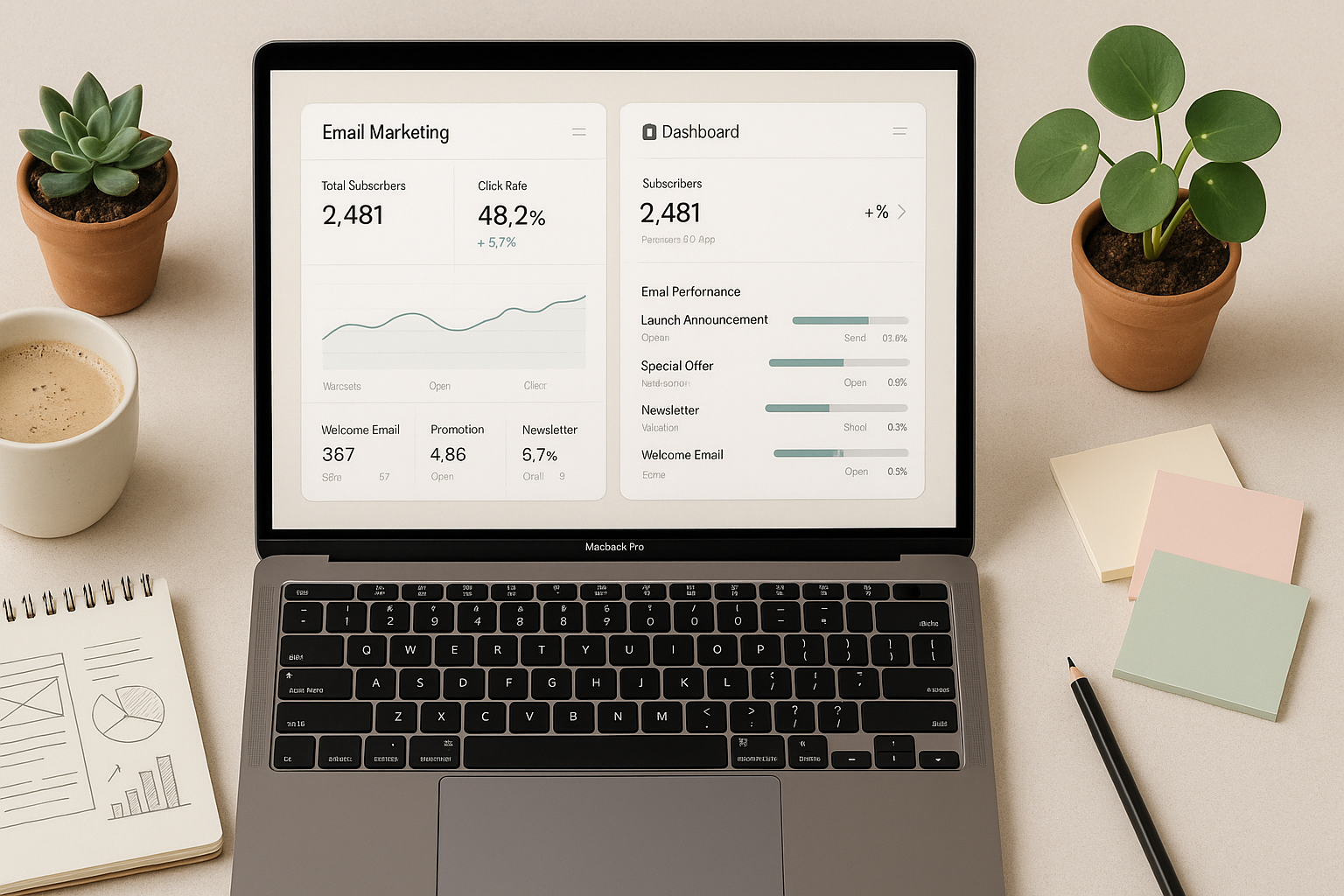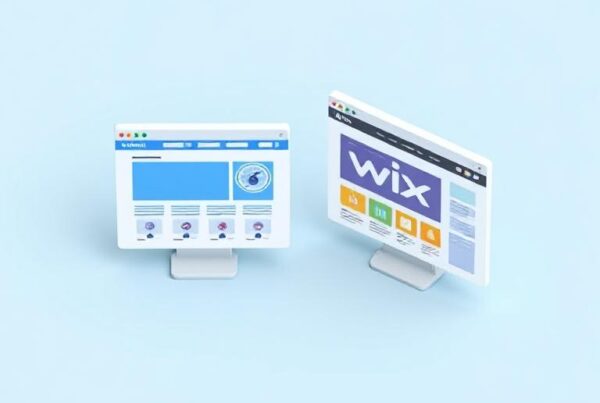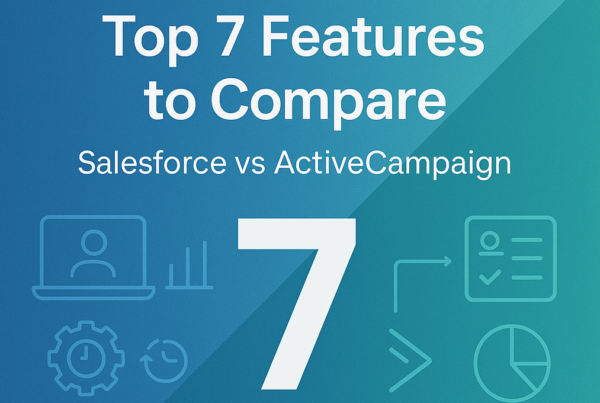When comparing Flodesk vs ConvertKit, you choose between a visually stunning newcomer and an established email marketing veteran. ConvertKit has been around since 2013, while Flodesk is the newer platform that is quickly gaining popularity, particularly among female entrepreneurs.
The pricing difference between these platforms is striking. Flodesk uses a flat-rate model, while ConvertKit offers tiered pricing — detailed breakdowns available in our Flodesk pricing guide. ConvertKit, however, uses a tiered pricing model that starts at $9/ 9/month for 300 subscribers and increases to $199/month for 25,000 subscribers. For those just starting, ConvertKit provides a free plan for up to 1,000 subscribers, while Flodesk offers a 30-day free trial instead. Want the full pricing breakdown? Check our Flodesk pricing plans to see which plan fits your list size and when flat-rate pricing becomes more cost-effective.
Performance-wise, the numbers tell an interesting story. In a three-week test, ConvertKit achieved an average open rate of 29.73% with a click rate of 1.63%, slightly outperforming Flodesk’s 22.70% open rate and 1.53% click rate. Additionally, ConvertKit boasts over 70 supported integrations compared to Flodesk’s limited options.
If you’re trying to decide between these platforms for 2025 and beyond, your choice ultimately comes down to priorities. Do you value ConvertKit’s robust tagging and segmenting capabilities for managing large lists? Or does Flodesk’s visually appealing editor with stunning templates better suit your brand needs? Let’s dive deeper into this comparison to help you find the perfect email marketing platform for your business.
Flodesk vs. ConvertKit Pricing and Cost Breakdown

Flodesk’s and ConvertKit’s pricing models represent two fundamentally different approaches to email marketing costs. Understanding these differences can significantly impact your marketing budget as your business grows.
1. Free Plan: ConvertKit’s 1,000 Subscribers vs Flodesk’s 30-Day Trial
ConvertKit offers a free plan that allows up to 1,000 subscribers with limited features. This permanent free tier enables new creators to build lists without immediate investment. In contrast, Flodesk provides a 30-day free trial with access to all features, letting you test the platform thoroughly before committing financially. Trial requires no credit card information, allowing you to explore without automatic billing concerns.
2. Flat Rate vs. Tiered Pricing: $38/month vs. Scaled Plans
Flodesk uses a flat-rate model, while ConvertKit offers tiered pricing — detailed breakdowns available in our Flodesk pricing guide. This straightforward approach means you’ll pay the same amount whether you have 100 subscribers or 100,000. For annual subscribers, this drops slightly to $35 per month ($420 annually).
Conversely, ConvertKit uses a tiered pricing system that increases as your list grows. Their paid plans start at:
- Creator: $29/month for up to 1,000 subscribers
- Creator Pro: $59/month for up to 1,000 subscribers
These rates increase at specific subscriber thresholds. For example, at 3,000 subscribers, prices jump to $49/month for Creator and $79/month for Creator Pro.
3. Long-Term Cost Implications for Growing Lists
The long-term financial impact becomes apparent as your subscriber base expands. As your list grows, ConvertKit’s costs increase with each tier, while Flodesk’s flat-rate model stays consistent.
One user reported saving over $6,000 annually after switching to Flodesk with their 80,000-subscriber list. ConvertKit would cost approximately $559/month ($6,708/year) at that level.
4. Flodesk vs ConvertKit 2025: Pricing Trends and Predictions
As we look toward 2025, both platforms appear committed to their core pricing philosophies. Flodesk’s economies of scale approach suggests they’ll maintain their flat-rate model, making it increasingly attractive for rapidly growing lists. ConvertKit seems equally dedicated to its subscriber-based pricing, though they’ve shown flexibility by introducing their free tier.
Flodesk has expanded its offerings to include Flodesk Checkout and bundled options for creators. It suggests a trend toward feature-based pricing rather than subscriber-based increases.
In the long run, your choice ultimately depends on your growth trajectory. For businesses anticipating significant list growth, Flodesk presents clear financial advantages. Alternatively, those maintaining smaller, highly engaged lists might find ConvertKit’s free or lower-tier plans more economical for the foreseeable future.
Design and User Experience: Visual Appeal vs Functional Simplicity

The visual experience of an email marketing platform can make or break your workflow efficiency. Flodesk and ConvertKit take dramatically different approaches to design philosophy, prioritizing aesthetics and focusing on functionality.
1. Email Builder Interface: Drag-and-Drop vs Text-Based Editor
Flodesk’s email builder stands out with its intuitive drag-and-drop interface that allows you to create visually stunning emails without design skills. The editor enables you to drag, drop, and customize elements effortlessly, giving you complete creative control.
ConvertKit, alternatively, offers a more streamlined text-based editor that functions like a word processor. Although less visually oriented, this approach prioritizes deliverability over aesthetics. The editor includes layout blocks and customization options, but maintains a more straightforward interface that some users might find limiting compared to Flodesk’s flexibility.
2. Template Variety and Customization Options
Flodesk excels with its extensive template library, offering hundreds of professionally designed options. A goal can filter these templates, preview them on different devices, and customize them with brand colors, fonts, and logos.
In contrast, ConvertKit provides a limited selection of templates focusing on plain-text formatting. This approach supports ConvertKit’s philosophy that substance matters more than style. Although ConvertKit’s templates are responsive by default, they offer fewer styling options without custom CSS knowledge.
3. Ease of Navigation: Guided Setup vs Dashboard Access
Flodesk implements a step-by-step workflow that guides you through the email creation process. This hand-holding approach benefits beginners but may frustrate experienced marketers who prefer direct access. The clean, minimal interface reduces visual clutter, typically offering only 2-3 options per screen.
ConvertKit’s dashboard presents more information and functionality on a single screen. This busier interface can initially seem overwhelming, creating a steeper learning curve. Once familiar, however, this consolidated approach lets you accomplish tasks with fewer clicks.
4. Mobile Responsiveness and Accessibility
Both platforms prioritize mobile optimization differently. Flodesk lets you preview emails on mobile devices before sending them, ensuring your designs look perfect regardless of screen size. ConvertKit’s email templates are responsive by default, with their more straightforward design philosophy naturally adapting to various screen sizes.
As we look toward Flodesk vs. ConvertKit 2025, the gap in design approaches will likely remain, with Flodesk continuing to appeal to visually oriented creators and ConvertKit to those prioritizing content over aesthetics.
Looking for advanced automation beyond Flodesk and ConvertKit? Discover how ActiveCampaign’s powerful features stack up against these platforms in our comprehensive ActiveCampaign review and comparison guide.
Flodesk vs ConvertKit for Visual Brands
For creative entrepreneurs and visual-focused businesses, the email marketing platform becomes an extension of their brand identity. The choice between Flodes vs. k vs. vsConvertKit often hinges on whether stunning visual presentation or functional efficiency drives their marketing strategy.
1. Design-Centric Features in Flodesk
Flodesk transforms email creation into a visual design experience rather than a technical task. Compared to traditional text-heavy approaches, the platform treats every email as a canvas on which your brand aesthetics take center stage.
- Photo integration tools that seamlessly blend images with text layouts
- Brand kit functionality stores your colors, fonts, and logos for consistent application
- Advanced typography controls offering extensive font pairing and sizing options
- Template customization depth allows complete visual overhauls while maintaining structure
This design-first philosophy means you’re not just sending emails but creating branded experiences. Every subscriber interaction becomes an opportunity to reinforce your visual identity and professional credibility through carefully crafted communications.
2. Branding and Aesthetic Control
Visual consistency across all touchpoints builds brand recognition and trust. Flodesk enables this consistency by making your emails look like natural extensions of your website, social media, and marketing materials.
ConvertKit’s approach prioritizes content over aesthetics, following the philosophy that plain-text emails feel more personal and achieve better deliverability. This stripped-down approach works exceptionally well for content creators who rely on authentic, conversational communication styles.
3. When Visual Appeal Impacts Engagement
Industries like fashion, photography, and design see measurable engagement increases when emails match their visual brand standards. Beautiful emails create emotional connections that translate into higher click-through rates.
However, over-designed emails can sometimes trigger spam filters or appear promotional rather than personal. The key lies in balancing visual impact with deliverability considerations.
- Product-based businesses benefit most from Flodesk’s visual capabilities
- Service providers often achieve better results with ConvertKit’s simplicity
- Creative agencies need Flodesk’s design flexibility for client representation
Testing your audience’s response to different design approaches reveals whether visual appeal or simplicity drives better engagement. Your industry and audience demographics determine which platform delivers superior results for your business.
Automation and Workflow Capabilities
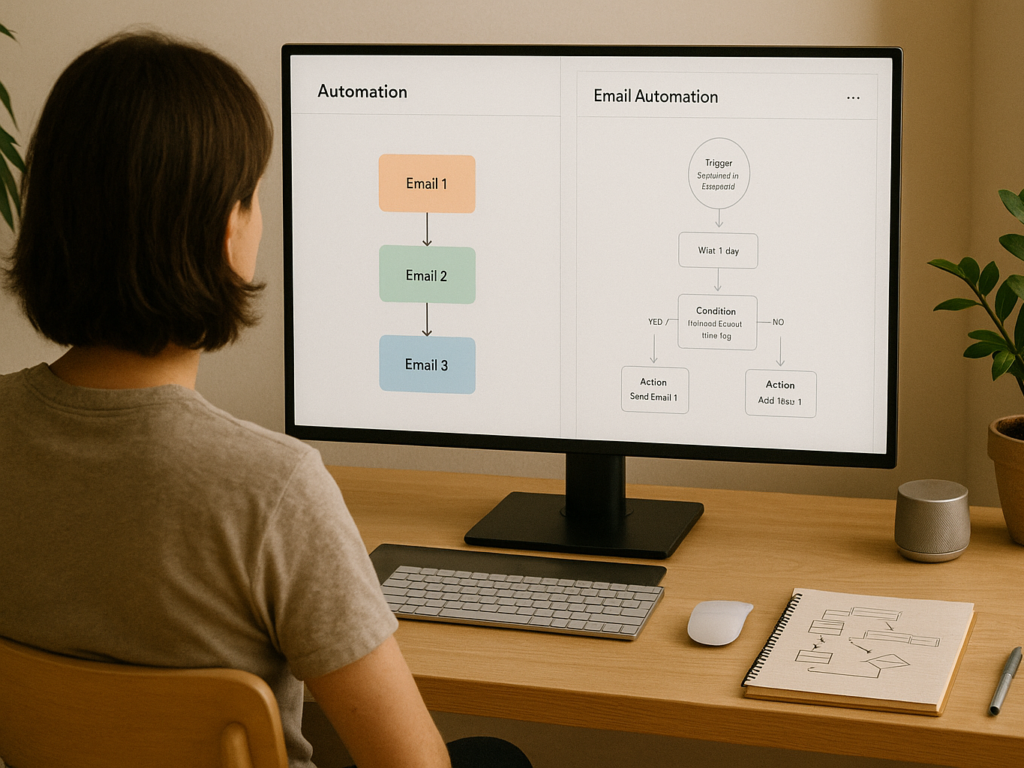
Effective automation is the cornerstone of successful email marketing. It enables you to deliver targeted messages without constant manual intervention. When examining Flodesk vs. ConvertKit, their automation capabilities reveal fundamental differences in approach and functionality.
1. Visual Automation Builders: Workflow Setup Comparison
Both platforms offer visual automation builders that allow you to map out subscriber journeys. ConvertKit’s Visual Automation builder provides more advanced functionality with a wider range of triggers, events, and actions. This complexity gives you precise control over your email sequences.
Flodesk takes visual automation literally, displaying email screenshots within the workflow map rather than just text representations. While visually appealing, Flodesk offers fewer starting triggers, and subscribers can only enter workflows when added to a segment.
2. Tagging and Segmenting: Manual vs Rule-Based Logic
ConvertKit utilizes both tags and segments to organize subscribers. Tags track subscriber actions (like purchasing products or clicking links), while segments group subscribers with similar interests. This dual approach allows for highly targeted messaging based on detailed subscriber behavior.
Alternatively, Flodesk simplifies with segments only, lacking the additional layer of tags. This streamlined approach makes Flodesk more approachable for beginners, but it is potentially limiting as your email strategy grows more sophisticated.
3. Link Triggers and Conditional Actions
ConvertKit excels with its centralized “Rules” feature, creating reusable link triggers throughout your account. When subscribers click specific links, you can automatically apply tags or trigger actions without recreating the setup for each email campaign. Flodesk’s newer Link Actions feature enables similar functionality but requires setup within each email.
Both platforms allow for conditional branching in workflows based on subscriber actions. Flodesk permits multiple conditions within a single step, creating a clean workflow appearance. In contrast, ConvertKit’s conditions offer more complex “and/or” filtering options.
4. Delivering Lead Magnets and Freebies
The platforms differ significantly in lead magnet delivery. ConvertKit integrates delivery settings directly within form creation; no separate automation is required. This streamlined approach makes setting up multiple lead magnets considerably more efficient. Flodesk requires creating a dedicated workflow and segment for each lead magnet, potentially cluttering your automation dashboard as your business grows.
Looking toward Flodesk vs ConvertKit 2025, the automation gap may narrow as Flodesk continues developing new features. Nevertheless, ConvertKit’s automation tools currently provide greater flexibility for complex marketing strategies, which is especially important as your list grows and the value of targeted communication increases relative to your ConvertKit cost.
Advanced Features for Serious Email Marketers
Sophisticated email marketing requires tools that go beyond basic newsletter sending. ConvertKit was built specifically for professional marketers who need granular control over subscriber management, complex automation sequences, and detailed performance tracking capabilities.
1. Tagging and Segmentation Depth
ConvertKit’s dual-layer system of tags and segments creates unprecedented targeting precision. Tags track specific subscriber actions like “purchased course” or “clicked pricing link,” while segments automatically group subscribers by interests, demographics, or engagement levels.
This combination enables hyper-targeted messaging that feels personalized rather than generic. You can send different content to subscribers based on their purchase history, engagement patterns, or specific interests, dramatically improving relevance and conversion rates.
2. Automation Rules and Link Triggers
ConvertKit’s Rules feature transforms every link into a potential automation trigger. This centralized system means you can create complex subscriber journeys based on specific actions without rebuilding logic for each campaign.
- Purchase confirmations that automatically trigger welcome sequences
- Interest-based tagging from specific link clicks within any email
- Behavioral triggers that segment subscribers based on engagement patterns
- Cross-campaign automation that connects multiple sequences seamlessly
This level of automation sophistication allows you to create personalized subscriber experiences that adapt based on individual behavior patterns and preferences.
3. RSS-to-Email and Creator Network in ConvertKit
ConvertKit’s RSS-to-email feature automatically converts blog posts into email broadcasts, maintaining consistency between your content platforms. This automation ensures subscribers receive your latest content without manual intervention or additional workflow setup.
The Creator Network represents ConvertKit’s unique approach to subscriber sharing between complementary businesses. Approved creators can cross-promote to each other’s audiences, expanding reach through strategic partnerships rather than traditional advertising methods.
How does Mailchimp compare to Flodesk and ConvertKit? Check out our detailed Mailchimp analysis to see if this popular platform might be better for your business needs.
Analytics and Deliverability Performance
Behind the visual elements and automation tools, analytics and deliverability determine your email marketing success. Looking at Flodesk vs ConvertKit, their approaches to performance tracking reveal distinct priorities.
1. Email Open and Click Rates: Real-World Benchmarks
Real-world testing shows ConvertKit typically outperforms Flodesk in engagement metrics. In a three-week comparison, ConvertKit achieved open rates between 27.3% and 30.6% and 1.5-2.7% click rates. Flodesk showed open rates of 21.4-23.8% with 1.2-2.1% click rates. Nevertheless, another user reported similar deliverability between platforms but noted higher click rates after switching to Flodesk.
2. Subscriber-Level Insights and Engagement Tracking
Both platforms offer analytics dashboards, but with different approaches. Flodesk presents metrics through visually appealing graphs, providing insights like optimal sending times and device usage data. ConvertKit offers more granular subscriber tracking, displaying which emails were opened, automation triggered, and purchases made.
ConvertKit requires its Creator Pro plan for advanced analytics, making its comprehensive reporting more expensive than Flodesk’s analytics, which comes standard with all plans.
3. Spam Handling and Cold Subscriber Management
Deliverability depends largely on sender practices rather than platform selection. Both services automatically unsubscribe users who mark emails as spam, protecting your sender’s reputation. ConvertKit excels at automated cold subscriber management, segmenting inactive subscribers for easy removal. Meanwhile, Flodesk requires manually creating cold subscriber segments by filtering based on the last activity date.
4. A/B Testing: Subject Line Split Testing in ConvertKit
A noticeable difference emerges with A/B testing capabilities. Flodesk currently lacks A/B testing features entirely. Conversely, ConvertKit offers subject line split testing for broadcast emails. It sends different subject lines to 15% of your audience each and automatically sends the winner to the remaining 70% after about four hours. Users report significant benefits from this feature, with one noting, “The discrepancy in open rate can be massive.”
When considering Flodesk vs ConvertKit pricing alongside these analytics features through 2025, remember that ConvertKit’s most robust analytics require higher-tier plans. In contrast, their standard flat-rate cost includes Flodesk’s analytics improvements.
Performance Metrics and Reporting Tools

Both Flodesk and ConvertKit offer performance tracking, but they have different priorities. ConvertKit emphasizes deep analytics and automation-driven insights, while Flodesk focuses on visually elegant dashboards. Your choice depends on whether you need advanced data or simplified, design-forward reporting.
1. Email Analytics: What Each Platform Tracks
ConvertKit provides comprehensive analytics, including subscriber growth trends, campaign performance over time, and revenue attribution from specific emails the platform tracks, which emails generate sales, helping you understand your most profitable content types.
Flodesk focuses on visualizing metrics through elegant dashboards and graphs. While less detailed than ConvertKit’s reporting, Flodesk includes essential metrics like optimal sending times and device usage patterns for better campaign timing.
2. Subscriber Behavior Insights
Understanding individual subscriber journeys becomes crucial as your list grows. ConvertKit maintains detailed subscriber profiles showing email opens, automation triggers, and purchase history, enabling personalized follow-up strategies based on specific behavior patterns.
Flodesk provides segment-level insights rather than individual subscriber tracking. This approach gives you a broad audience understanding while maintaining simpler data management. However, it limits your ability to personalize based on individual subscriber actions.
3. Cold Subscriber Cleanup and List Hygiene
Maintaining list quality directly impacts deliverability rates and campaign performance. ConvertKit automatically identifies cold subscribers who haven’t engaged recently, making it easy to create re-engagement campaigns or strategically remove inactive contacts.
- Automated segmentation of subscribers by last activity date
- Re-engagement sequences targeting inactive subscribers specifically
- Deliverability protection through systematic inactive subscriber management
Flodesk requires the manual creation of cold subscriber segments using activity date filters. While this approach works, it demands more ongoing maintenance to keep your list healthy and engagement rates high.
Integrations, E-commerce, and Scalability
Beyond core functionality, the ecosystem surrounding your email platform can dramatically impact long-term satisfaction and growth potential. When evaluating Flodesk vs ConvertKit, their integration capabilities and scalability reveal stark differences.
1. Native Integrations: 70+ in ConvertKit vs. Shopify-Only in Flodesk
ConvertKit offers approximately 70+ native integrations with platforms like Teachable, Monday.com, Typeform, and Acuity. This extensive connectivity allows for seamless workflows between your essential business tools. Conversely, Flodesk currently provides only one native integration: Shopify. This limitation necessitates using Zapier to connect with other platforms, potentially adding costs beyond Flodesk’s base pricing.
2. E-commerce Tools: ConvertKit Commerce vs Flodesk Checkout
Both platforms offer built-in selling capabilities. Flodesk Checkout allows you to create visually appealing sales pages, accept payments, and automatically deliver digital products. Notably, Flodesk charges no platform fees, only Stripe’s standard 2.9% + $0.30 processing fee.
ConvertKit Commerce provides greater flexibility in product types and payment structures. You can sell digital products and subscriptions or create payment plans. ConvertKit charges a 3.5% + $0.30 transaction fee, slightly higher than Flodesk’s processing-only model.
3. Custom Code and Advanced Features
ConvertKit permits custom HTML and CSS in emails, enabling advanced styling and functionality like embedded countdown timers. Conversely, Flodesk officially states that it doesn’t support custom code insertion, claiming its editor should fulfill all design needs, albeit with workarounds for certain elements like countdown timers.
4. Which Platform Scales Better with Business Growth?
Ultimately, scalability depends on your priorities. Flodesk offers unlimited subscribers at a fixed price, making it financially advantageous as your list grows. Consequently, businesses anticipating rapid subscriber growth may find Flodesk more cost-effective through 2025.
Admittedly, ConvertKit provides more advanced features that sophisticated marketers might require, including A/B testing, stronger segmentation, and broader integration options. The platform scales technically better, but at progressively higher costs as your list expands.
Are you considering a more traditional email marketing approach? Our Constant Contact review explores how this established platform compares to Flodesk and ConvertKit for small business owners.
Comparison Table: Flodesk vs ConvertKit
This comparison table compares Flodesk and ConvertKit across key features like pricing, analytics, automation, and ease of use. It offers a glance at each platform’s strengths, helping you choose the best email marketing tool for your goals.
| Feature | Flodesk | ConvertKit |
| Pricing Structure | ||
| Base Monthly Price | $38/month flat rate | Starts at $29/month (Creator Plan) |
| Free Option | 30-day trial | Free plan up to 1,000 subscribers |
| Large List Cost (25,000 subscribers) | $38/month | $199/month (Creator Plan) |
| Performance Metrics | ||
| Average Open Rate | 22.70% | 29.73% |
| Average Click Rate | 1.53% | 1.63% |
| Design & Interface | ||
| Email Builder | Visual drag-and-drop | Primarily text-based editor |
| Templates | Extensive library with visual designs | Limited, plain-text focused |
| Mobile Preview | Built-in preview tool | Responsive by default |
| Automation | ||
| Segmentation | Segments only | Tags and segments for more granular control |
| Lead Magnet Delivery | Requires workflow setup | Built directly into form creation |
| Link Triggers | Individual email setup | Centralized “Rules” feature |
| Integration & Analytics | ||
| Native Integrations | Limited (primarily Shopify) | Over 70 native integrations |
| A/B Testing | Not available | Subject line testing available |
| Custom Code Support | Not supported | HTML and CSS are supported |
| 2025 Outlook | ||
| Pricing Strategy | Expected to maintain a flat-rate model | Likely to continue tiered pricing |
| Growth Focus | Emphasis on visual features and design | Focus on advanced automation and integrations |
Final Verdict: Which Platform Is Right for You?
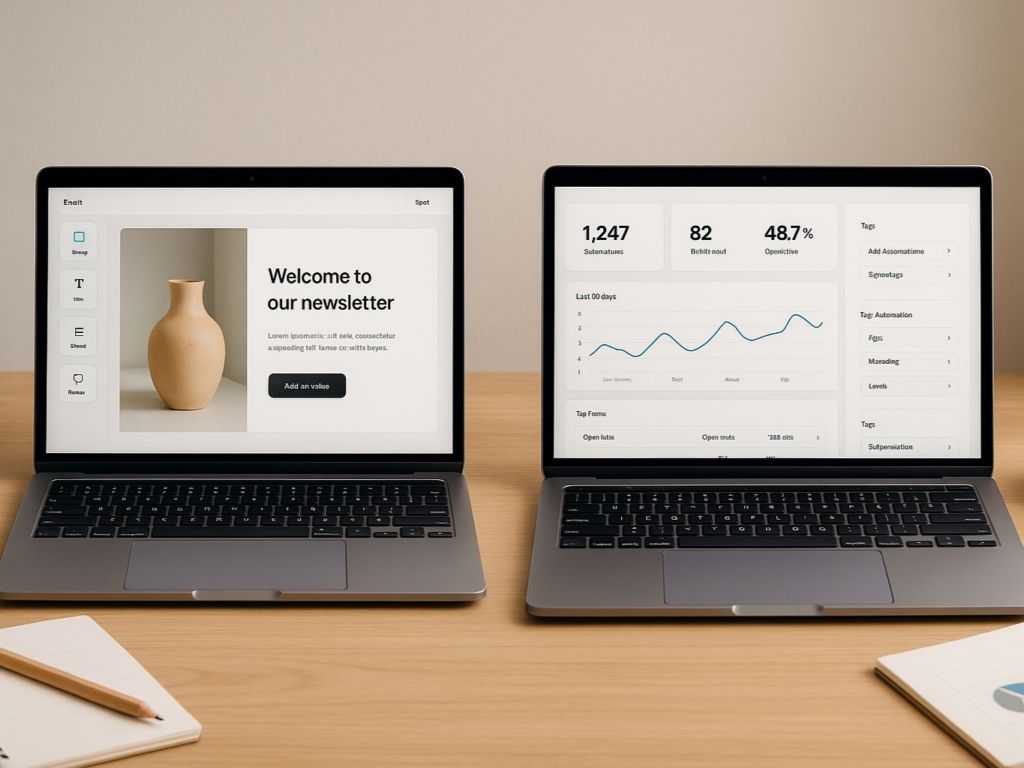
Flodesk vs ConvertKit offers a clear trade-off between beauty and technical power. Flodesk shines with its flat-rate pricing, making it ideal for creators expecting audience growth. In contrast, ConvertKit’s pricing increases with subscribers, but it delivers superior automation, 70+ integrations, and better analytics for serious marketers.
Regarding Flodesk vs ConvertKit pricing, the difference grows with scale. At 5,000 subscribers, ConvertKit costs $79/month compared to Flodesk’s steady $38. This cost gap becomes massive at 25,000 subscribers. So, if budget predictability is key, Flodesk wins. But if you need deep segmentation and A/B testing, ConvertKit justifies its higher cost for high-performing campaigns.
In 2025, expect both platforms to double down on their strengths. Flodesk vs ConvertKit 2025 will likely see Flodesk refining its user-friendly, design-forward experience while ConvertKit improves its automation and analytics. Ultimately, Flodesk suits visual creators like designers and photographers. At the same time, ConvertKit is built for serious content marketers, course sellers, and data-driven email strategists. New to the platform? Start with our complete What is Flodesk guide to understand its features, interface, and setup before deciding which tool to pick.
FAQs on Flodesk vs ConvertKit
Q1. How do Flodesk and ConvertKit pricing models differ?
Flodesk charges a flat $38/month regardless of subscriber count, making it ideal for growing lists. ConvertKit uses a tiered model starting at $29/month, which increases as your subscriber base grows, potentially raising costs significantly over time.
Q2. Which email builder is better: Flodesk or ConvertKit?
Flodesk offers a visual, drag-and-drop email builder ideal for creating beautiful, branded emails. ConvertKit uses a text-based editor focused on clean formatting, simplicity, and email deliverability, catering to creators concentrating on written content and functionality.
Q3. What are the differences in automation capabilities between Flodesk and ConvertKit?
ConvertKit excels with advanced automation using tags, triggers, and complex workflows. Flodesk provides simpler, visually intuitive automation options for basic sequences. ConvertKit offers more powerful automation, flexibility, and segmentation tools for users needing detailed subscriber journeys.
Q4. How do Flodesk and ConvertKit handle integrations with other platforms?
ConvertKit supports 70+ direct integrations, including WordPress, Teachable, and Shopify. Flodesk offers limited native integrations, primarily Shopify, requiring third-party tools like Zapier to connect with most other platforms, which may add complexity and cost for non-technical users.


